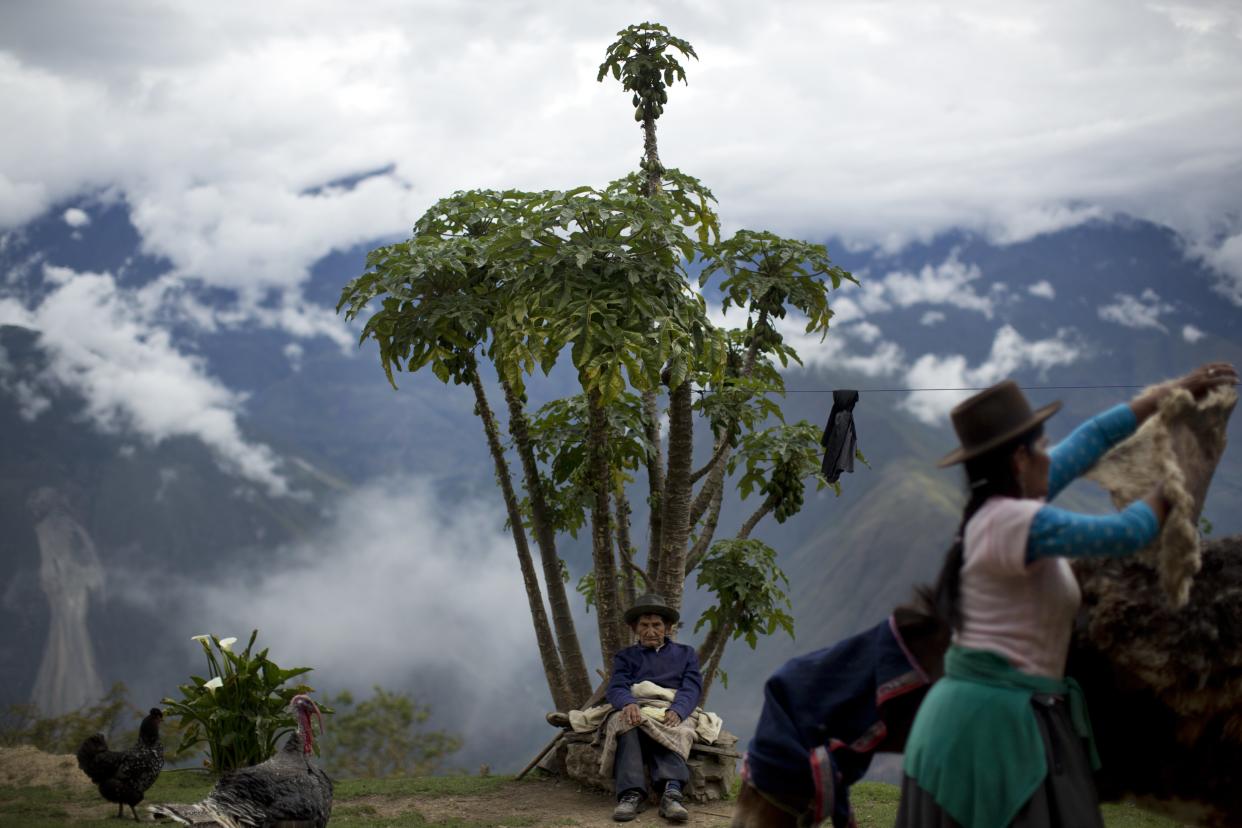Peru Tries to Adapt to Dangerous Levels of UV Radiation Brought on by Climate Change

The brisk March morning air is a shock after the tourists have recently, regretfully unpacked themselves from their cozy alpaca wool blankets and climate-controlled buses. Watching them is Natividad Sonjo, who has been selling blankets, painted stones and carved bamboo instruments for 15 years on the eastern edge of Sacsayhuamán, an archaeological complex of enormous stone walls and wide lawns just north of Cusco, Peru, the seat of the great Inca empire. The diffuse sunlight of a cloudy morning high in the Andes softly illuminates the city. And then, all at once, the sun breaks through, bringing with it a wallop of heat. Soon, any memory of the cool air has evaporated along with the clouds, but Sonjo doesn't remove the elaborately embroidered wool jacket she put on first thing that morning. "The sun used to warm us," she says, repeating a common refrain among inhabitants of the Peruvian altiplano. "Now it burns us."
The sun has always been strong in Cusco. The city's proximity to the equator and its altitude—some 11,150 feet above sea level—mean that come summer in the Southern Hemisphere, sunlight doesn’t have to travel far to reach Cusco. It also doesn’t encounter much interference along the way—not a good state of affairs for those who live here. The amount of ultraviolet radiation that makes it to Earth is limited by atmospheric ozone, a molecule made up of three oxygen atoms bound together. At higher altitudes, there are fewer ozone molecules between the Earth and the sun, making UV readings normally elevated in mountainous regions near the equator. In 2006, climate researchers found Cusco and the surrounding area to have the highest UV readings in the world. But now, as climate scientists say the planet is reaching critical temperatures worldwide, Peruvian meteorologists are recording record levels of UV radiation throughout the country, while meteorologists in Chile, Argentina and Bolivia are recording similarly increased levels in regions close to Peru.
The effects of prolonged exposure to ultraviolet radiation can be calamitous. The risk of developing skin cancer doubles after only a few acute exposures, the World Meteorological Organization said El Niño and man-made climate change had combined in 2015 to raise global temperatures an additional 1 degree Celsius over the Earth’s pre-industrial temperature—enough of a shift, the majority of climatologists believe, to have catastrophic effects in the future. "The power of El Niño will fade in the coming months," said the secretary-general of WMO, Petteri Taalas, in a statement. "But the impacts of human-induced climate change will be with us for many decades."
But while Ccora's work with the meteorological service means he spends much of his day looking at numbers and projecting into the future, ultimately he is concerned with educating the public so people can take steps to protect themselves from a world that has already become more hostile. "Ten years ago, people here in Peru didn't know much about UV radiation," says Ccora. "Now many more do, but there is still that proportion of the public that doesn't know how dangerous it can be. We've got a lot left to do."
More from Newsweek Europe

 Yahoo News
Yahoo News 

